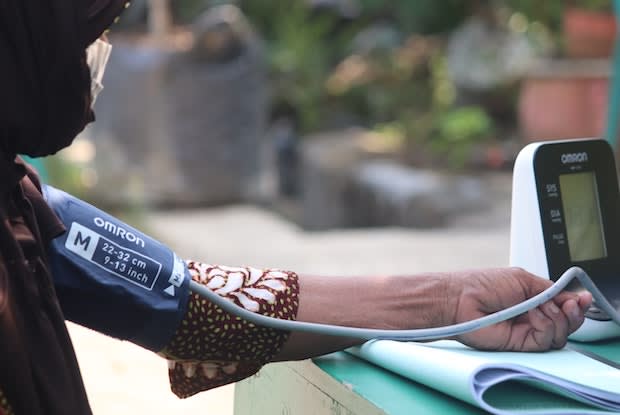Table of Contents
b. What is Cardiovascular Disease?
II. Why is there an Increased Risk?
III. Type 2 Diabetes Treatments
Overview
Diabetes and cardiovascular disease (CVD) are linked in many ways. Almost 70 percent of people over 65 with diabetes die from a form of heart disease. [1] Keep reading to learn more about these conditions and the links between them.
a. What is Diabetes?
Around 34 million Americans have diabetes. That’s more than one in ten. On top of that, another 88 million people in the United States have prediabetes. [2] Prediabetes is a condition where people have high levels of blood sugar, but they are not high enough to be diagnosed with diabetes. Diabetes itself can be split into two categories; type 1 and type 2 diabetes.
Insulin is a hormone that is produced naturally by the pancreas. The role of insulin is to convert glucose (blood sugar) into energy for the body. Insulin also helps control glucose levels and store excess glucose in muscle and fat cells.
Type 1 diabetes occurs when the body does not produce sufficient amounts of insulin. It is therefore treated with insulin itself. It can be administered via an insulin pump or through injections. Patients with type 2 diabetes produce enough insulin for the body but are unable to use it efficiently. Type 2 diabetes is treated using medications such as metformin (Glucophage) and sitagliptin (Januvia).
b. What is Cardiovascular Disease?
Cardiovascular diseases are a group of conditions affecting the heart and the blood vessels. Common CVDs include coronary heart disease, heart failure, stroke, and high blood pressure, along with several more. Around the world, more people die from CVDs each year than from any other cause of death. [3]

While there are many different types of cardiovascular diseases, they often have overlapping symptoms and causes. Common risk factors for CVDs include an unhealthy diet, smoking, alcohol use, and physical inactivity.[3]
While symptoms will vary between conditions, the following symptoms may be a sign of an underlying cardiovascular problem. Speak to your doctor if you notice the following symptoms:
- Shortness of breath
- Chest pain or pressure
- Nausea
- Fatigue, dizziness, or lightheadedness
- Pain or discomfort in the arms, elbows, left shoulder, back or jaw
- Cold sweats [4]
Why is there an Increased Risk?
Having either type 2 diabetes or heart failure increases your risk of developing the other condition. Over a period of time, high levels of blood sugar can damage your blood vessels and other nerves that control the heart. There are several reasons why these two conditions are linked.
a. High Blood Pressure
High blood pressure (HBP) is incredibly common and affects over 100 million people in the United States. [5] While HBP is in itself a cardiovascular disease, it is also a major risk factor for other CVDs, such as heart attack and stroke. [6] The combination of both type 2 diabetes and high blood pressure is very dangerous and significantly raises the chance of suffering from a heart attack or stroke. [7]

b. High Cholesterol
High cholesterol levels are another risk factor for heart disease. Cholesterol is a substance that your body uses to build cells. Some cholesterol is produced by your liver, while other cholesterol is found in the meat and dairy we eat. Cholesterol can be split into two groups; LDL cholesterol (low-density lipoprotein) is bad for us, while HDL cholesterol (high-density lipoprotein) is good for our bodies. [8] Unfortunately, diabetes often raises our levels of LDL while lowering HDL levels. Both of these increase the risk of developing serious cardiovascular diseases. [9]
c. Obesity and Inactivity
Obesity is a major risk factor for both type 2 diabetes and cardiovascular diseases. According to the World Health Organization (WHO), excess body weight and physical inactivity are the primary factors in developing type 2 diabetes. [10] This is because being overweight can increase insulin resistance from the body. Obesity is also a major risk factor for CVDs such as heart disease and high blood pressure.
Another risk factor for both conditions is physical inactivity. Exercising regularly and losing weight can reduce your chance of developing type 2 diabetes and many CVDs.
Type 2 Diabetes Treatments
a. Medications
There are many different types of medications that can be used to treat type 2 diabetes. These medications work in different ways and will be prescribed depending on your condition. Typically, the first medication prescribed will be metformin (Glucophage). [11] Metformin works by reducing the amount of glucose that your liver produces. It also helps increase your body’s effectiveness at using the insulin produced.

Other types 2 medications include linagliptin (Tradjenta) and sitagliptin (Januvia). These medications work by increasing the amount of insulin that is released following a meal, while also decreasing the liver’s glucose production.
b. Diet and Exercise
As mentioned, the biggest risk factor for type 2 diabetes and a major risk factor for cardiovascular diseases is obesity. People who have these conditions, or are at risk of them, should eat healthily and exercise regularly.
The content in this article is intended for informational purposes only. This website does not provide medical advice. In all circumstances, you should always seek the advice of your physician and/or other qualified health professionals(s) for drug, medical condition, or treatment advice. The content provided on this website is not a substitute for professional medical advice, diagnosis, or treatment.
